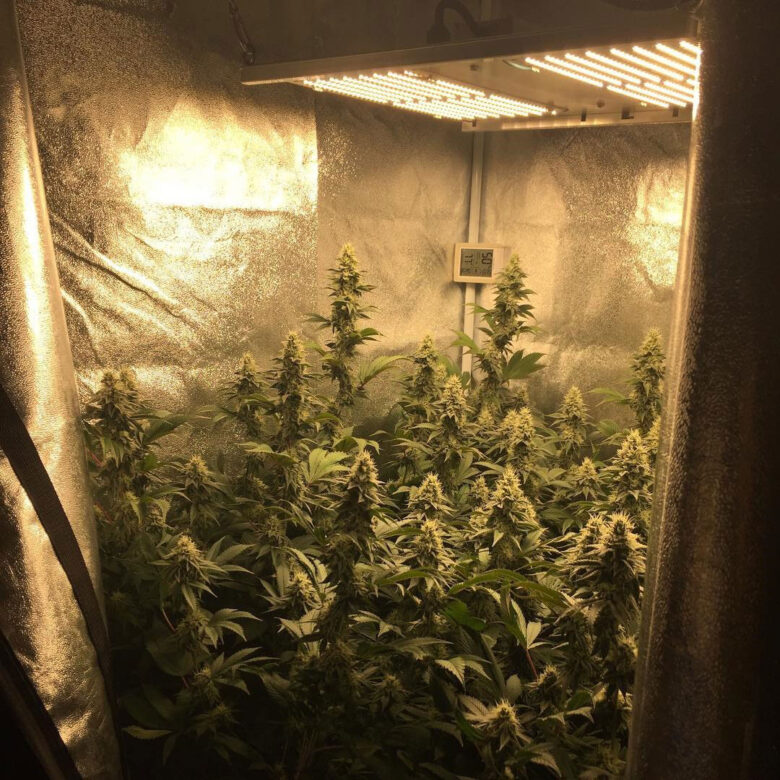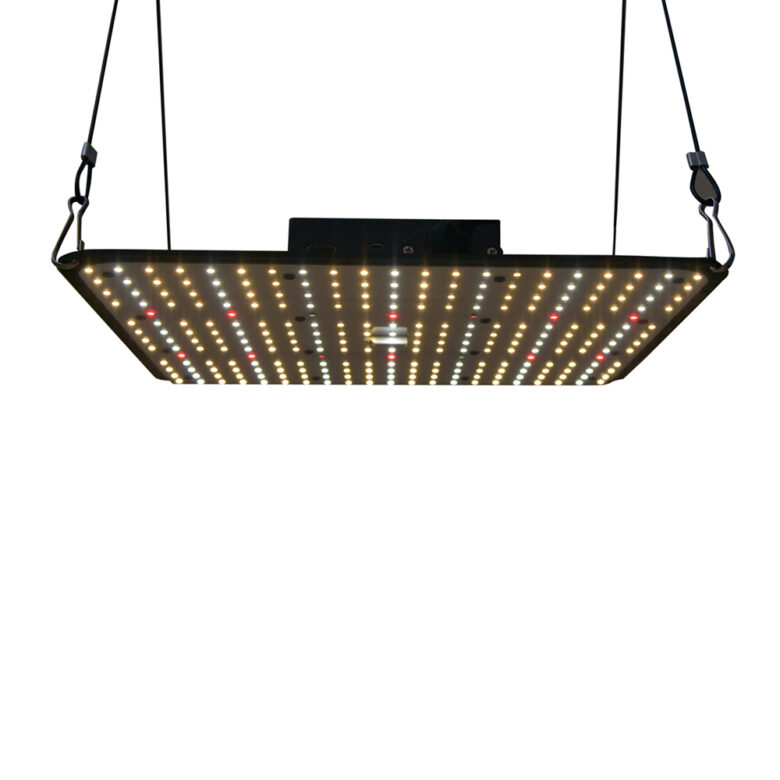Growing indoors has become a major hobby for millions of people around the world and there are a lot of great reasons why: it is easy, you are able to grow quality fruits, flowers, and vegetables, it is sustainable, and it is fun. There are many different lighting brands on the market, and it can be difficult to parse which brand is best. There have been major technological advancements in lighting technology, especially LED technology, that has made LED grow lighting extremely powerful and useful and guaranteed to produce excellent results. There are many types of LED lights on the market: from LED bars to quantum boards to powerful adjustable unique LED grow lights that have made special improvements that revolutionized the industry.
When searching for LED lighting, the best practice is to search for a light that has the right power rating for the corresponding size of tent and the power efficiency. Grow lights need to be able to cover both vegetative growth and flowering growth by providing blue light and red light without wasting energy through excess heat. Quantum boards are designed to reduce heat loss, extend the lifespan of the device, and to grow plants efficiently. They should have an efficacy of 2.9µmol/J. LED lighting are developed for growers of all experience levels and are designed to help bring a plant from the seedling stage to the flowering stage effortlessly. Lights are powerful, important components to grow spaces because they provide a replacement for sunlight, which plants need to grow. The best lights should include name-brand diodes, full spectrum tuning meaning you can adjust the intensity and spectral color, heatsinks for longevity, and quality components.
Depending on the budget there are different sizes of grow tents and grow equipment available to the budding grower. There are many sizes of tents, from 2 by 2 feet to 10 by 10 feet. Equipment ranges from inline ventilation fans to various types kinds of lighting to even small, convenient oscillation fans. All of this equipment together creates a better growing environment for plants, which need a vast set of equipment to grow happily.
Grow tent kits are a popular option for new and experienced growers alike. Smaller kits like the 2×2-foot grow tent kit are excellent for first delving into growing – they are inexpensive and extremely reliable. Larger grow tent kits such as a 10 x 10-foot tent is best for experienced growers who plan to grow multiple large plants. Vivosun Grow Kit would be a good choice for Beginners.

Source: growweedeasy.com
Contents
Guide to LED Grow Kits
What is an LED Grow Light?
A grow light is a type of light that emits energy as both heat and visible light that is optimized for plant growth, which plants use for photosynthesis. Grow lights are used by hanging them above the canopy of the plant so that it simulates sunlight “pouring” down onto the leaves, stems, and flowers.
A good grow light will imitate the most useful parts of sunlight. This means light on the spectrum from Ultraviolet to far-red and infrared. Light wavelength is measured in nanometers (nm), and these colors range in wavelength from about 350nm to 850nm.
There are multiple kinds of grow lights on the market: High-Intensity Discharge (HID) including Metal Halide (MH), Ceramic Metal Halide (CMH), and High-Pressure Sodium (HPS); T5 Fluorescent; and Light Emitting Diodes (LEDs).
LEDs differ from other kinds of grow lights by their technology. LEDs do not rely on external ballasts, bulbs, fixtures, or even reflectors. They do not put out as much heat as HID bulbs, yet they still produce as much if not more light than HID systems. They do not require much extra equipment, they are easier to maintain, and they last much longer without dimming over time. Let’s take a look at the differences between LED and HPS, the most popular HID bulb.

Source: leafled.eu
How Does an LED Grow Light Work?
An LED grow light works by passing an electrical current through a semiconductor diode. These semiconductors are made of a crystalline lattice (usually of a combination of chemicals like silicone) that hold electrons. When the electrical charge changes, these electrons are forced out of the lattice and into another, breaking the bonds with the lattice in the process, which releases energy in the form of heat and electricity.
This heat and electricity are then expelled through the semiconductor and out through a small colored cover that surrounds it. Usually, these colors are cool and warm white, blue, UV-A, red, and far-red, giving the entire light a purple hue in full spectrum.
When light falls onto a leaf, the colors penetrate into the cells and stimulate photosynthesis, the complex process of combining and changing nutrients, water, carbon dioxide, and other chemicals into sugars, amino acids, and ultimately structural components.

Source: toolots.com
Why Should You Get LED Grow Lights?
There are a number of pros and cons to LED grow lights. Let’s look through a few.
Pros of LED grow lights |
Cons of LED grow lights |
| More efficient than other comparable grow lights like HID systems. They use just half the energy required for T5 fluorescent grow lights, are better for the environment, and they are less taxing on the electricity bill. | The initial cost of LEDs is higher than other systems. This cost might scare some first-time growers. |
| They have a higher light intensity than T5 and HID systems. You will not need to move your lights around as much as you might with HID systems, either and they can be used for the entire grow cycle. | A full-spectrum LED light is technically not the full spectrum that is produced by the sun, but you wouldn’t want that as there is a lot of dangerous radiation. |
| They produce less heat than HID systems. LEDs operate 80% cooler than HID bulbs. This is important because excessive heat leads to higher ambient temperatures, higher electricity bills, a higher potential to burn your plants, and more difficulty controlling humidity. Additionally, a cooler lamp can be placed closer to the canopy for better, faster growth. | Adjusting the spectrum usually requires specialized equipment like a digital controller. |
| They have a longer lifespan than other bulbs, usually around 50,000 use hours. That is a total of 2,080 days of constant use! Compared to HID and T5 systems, LEDs never dim over time and don’t need to be thrown out, meaning you’re not adding harmful chemicals to the environment and not having to find specialized recycling centers. | Because LEDs are very efficient, they may not produce enough heat for warm-climate plants in cold climates, especially if you’re growing plants in a garage in winter. You’ll need to add a space heater or move your grow space to a warmer part of the house. |
| LED grow lights do not require extra equipment like reflectors, ballasts, or dedicated ventilation systems. Of course, you should always have a ventilation system but you do not need one to cool the light. | There is a lack of standardization in LED technology on the market so quality between brands can vary greatly and it can be difficult to know whether a brand is an expert at producing lighting. This means you’ll need to do a fair amount of research and rely on customer reviews. |
| Spectrums can be adjusted or “tuned” to fit the stage of growth that your plant is in. This tuning is a powerful tool for growers because it helps focus energy use towards the most useful coloration for your plant. |
